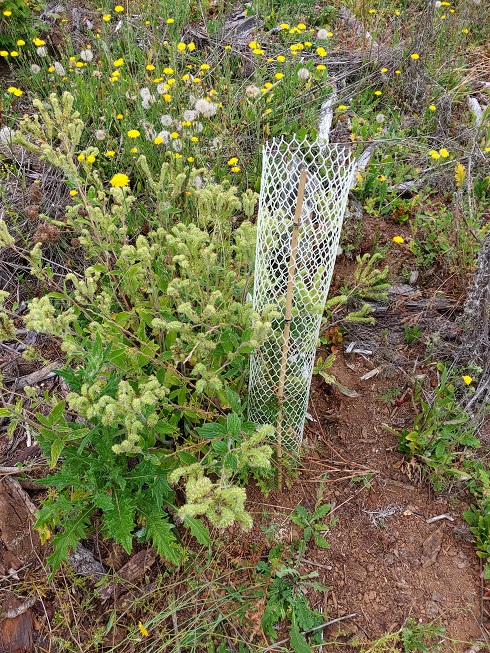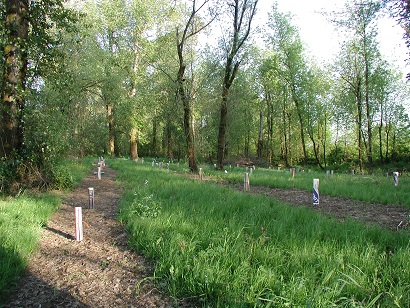Brad Withrow-Robinson, OSU Forestry & Natural Resources Agent, for Benton, Linn and Polk Counties
Many readers are aware of the interest in, as well as the importance of pollinators. Pollinators include many kinds of insects, and even some birds and mammals. But the pollinators attracting most of the attention are our native bees.
The Master Gardeners are great advocates of pollinator stewardship and do popular trainings on caring for mason bees and growing pollinator gardens. The potential and also the need for supporting pollinators in urban/suburban settings, as well as in a larger agricultural landscape is clear.
But what about all the forestlands in Oregon?
Well it turns out that many forest and woodland properties can and do provide native bee habitat. Sometimes very good habitat that many of us would not even recognize. So what does it look like?

The building blocks of native bee habitat are places to nest and flowers for food, located close enough together for bees to reach both.
Most of our native pollinators nest in the ground, many preferring bare mineral soil to dig their tunnels. Others nest in wood, in pithy centers of stems and branches and other woody debris. Flowers that provide nectar for the bees to eat and pollen to feed their brood are a clear requirement; but that we need a procession of flowers over the season is easily overlooked.
So, open areas with a mix of bare ground, some woody debris and an abundance of flowers blooming throughout the season nearby is a pretty good thumbnail sketch of awesome pollinator habitat.
Family forestlands in our area are often pretty diverse places. You can generally expect to find a variety of woodland conditions from dense conifer stands, to hardwood areas. There are often also a variety of open spaces like meadows, road edges and landings or recently harvested areas. In short, local woodland properties often have all the building blocks of great pollinator habitats.
Keep in mind that a thriving community of pollinators needs resources not for just one species of bee but for many kinds. It needs a wide range of conditions: different nesting substrates, and a wide variety of flowering plants that produces different shapes and sizes of flowers, in an ongoing succession of bloom from early spring into fall.
How about your place? As a woodland owner you likely have some bee habitat already and can probably do some easy things to keep it or improve it. It is often best to start with knowing what you have.
Take some time to thik about this, then take stock next spring and summer. Pay attention to what is flowering on your property, as well as when and where it blooms. Note (and identify) what you have in abundance, and pay attention to things that are particularly popular with a variety of insects. Channel your inner child, or better yet, involve your kids or grandkids in this! This would be a great journaling activity, combining observations, note taking, drawing and photography. Great fun!

Once you know what you have, you can think about ways to protect or improve it. I’ll be back next time with some resources and ideas about that.












